Introduction: North Berwick witches
Between 1590 and 1592 more than 70 people were accused of being witches in East Lothian, with their activities centring on the town of North Berwick.
The case became so well known that even King James VI of Scotland, personally intervened in the trials.
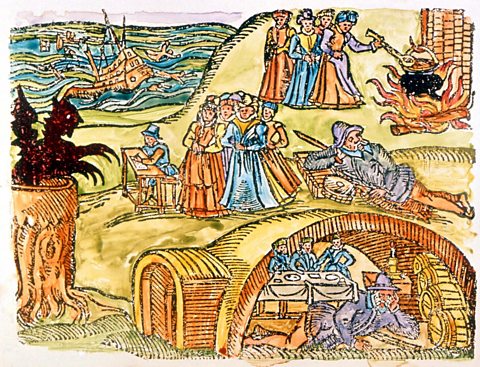 Image source, ALAMY
Image source, ALAMYWatch: The North Berwick Witch Hunt
Watch and learn how a poor Scottish servant girl was accused of trying to use witchcraft to kill a king!
The year is 1590 and King James VI was sailing home from Denmark with his new wife, when a storm whips up tremendously vicious and fierce, even sinking one of the fleet. But, in a superstitious era, storms arenāt always just bad weather ā sometimes theyāre seen as the work of dark magicā¦ And the perfect suspect was already in place.
A year early, in Tranent, near North Berwick, a teenage maidservant Geillis Duncan, had been accused of witchcraft, raising suspicion by her habit of sneaking out into the middle of the night to get up to who knows whatā¦She was tortured with thumbscrews before ultimately admitting to practising witchcraft. But worse still, that many more witches were involved.
The trials that followed coincided with Jamesās terrifying journey and he became personally involved. Obsessed, perhaps, with what became known as the North Berwick Witch Trials.
Now, it wasnāt just James. Across Europe fear of witchcraft was very much in the air. In 1563, Jamesās mother, Mary Queen of Scots, passed the Scottish Witchcraft Act, making witchcraft punishable by death.
These fears were further inflamed by the Trier Witch Trials in Germany, which resulted in hundreds of people being executed as witches.
James, an insecure young king, found himself swept up in their fears and paranoia. Returning from Denmark freshly scarred from the storm, he wanted ā no demanded ā answers. Who were these witches that wished him dead? And he became directly involved in the witch trials; dark events that use torture to extract confessions.
Take John Fian, a schoolmaster named by Geillis Duncan. He was subjected to torture by thumbscrews as well as āThe Bootā where the leg was placed in an iron casing that could break bones.
Naturally, questioning under torture led to a web of even more people being accused as victims desperately named other āwitchesā to stop the pain.
Tens of others became accused of being involved in witchcraft and confessed to all manner of tales. Hundreds of witches surfing on sieves , dancing in the North Berwick church and, crucially, Agnes Sampson drowning a cat in the River Forth to summon a tempest to drown the king. James had his evidence at last.
In North Berwick alone, over one hundred women and men were implicated with many ending up strangled or burned as a result of what became known as the North Berwick Witch Trials.
The events thoroughly convinced James of the dangers of witches and in 1597, he wrote an entire book, urging severe punishment for their crimes, Demonology.
And in Scotland alone, through the era, over 3,500 people were accused of witchcraft, with an estimated two thirds ending in execution. A brutal price to pay, but for James and many others, it was a step towards a safer Scotland.
King James VI and the terrible storm of 1589
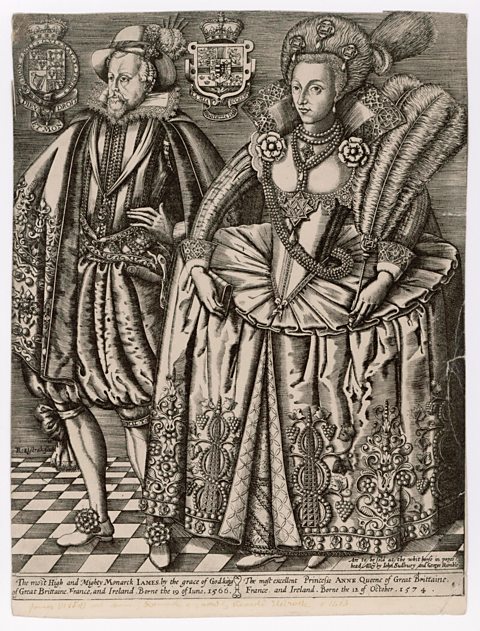 Image source, ALAMY
Image source, ALAMYIn 1589, King James VI of Scotland and princess Anne of Denmark were engaged to be married.
Anne left Copenhagen for Edinburgh in September 1589, but stormsrepeatedly forced the fleet of ships carrying her to take shelter in Norway. James decided to join her there, where they married in November.
They returned to Scotland the following April, but the fleet of ships was again battered by storms and one ship was sunk.
 Image source, ALAMY
Image source, ALAMYCopenhagen witch trials
In Copenhagen in May 1590, a woman called Ane Kolding had been arrested for witchcraft.
Under torture, Kolding confessed that she and a group of other women had sent demons to try to stop Princess Anne travelling to Scotland.
Kolding and twelve others were executed for witchcraft.
Now in Scotland, James heard news of the Copenhagen witch trials. This put the idea in his mind that magic had been used against his bride.
Did witches plot to kill King James?
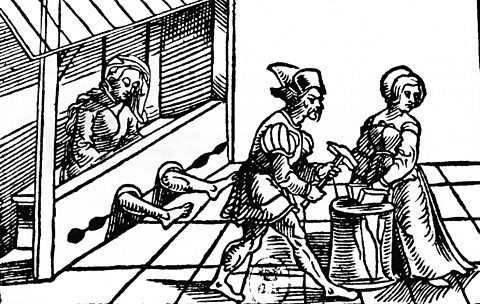 Image source, ALAMY
Image source, ALAMYThis could have been the end of the matter had a man from Tranent, East Lothian, David Seton, not become suspicious of one of his servants ā a young woman by the name of Geilis Duncan.
She was known locally as a healer, and frequently disappeared at night.
Fearing witchcraft, Seton had Geilis was arrested. She was tortured using a device called the pilliwinkes, similar to thumbscrews, and it was alleged that the Devilās Mark was found on her throat.
Under pressure, Geilis confessed and she named other witches from Edinburgh and East Lothian who she said were behind attempts to sink the ships of the king.
 Image source, ALAMY
Image source, ALAMY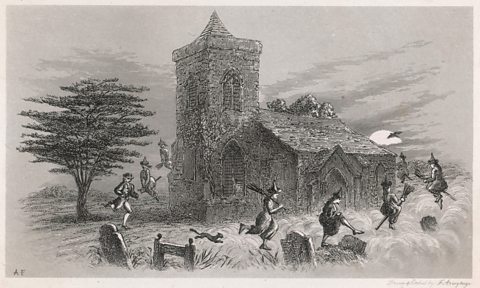 Image source, ALAMY
Image source, ALAMYThose who Duncan named were also arrested and questioned.
In many cases they were tortured, like the local school master, John Fian, who "was put to the most severe and cruell paine in the world, called the Bootes". This means his legs were put into tight clamps into which wedges of wood were hammered.
Most of the people arrested ended up confessing or naming others that they claimed were also witches.
The story that emerged described gatherings of witches where the Devil had appeared and instructed them to kill King James.
King James became aware of the plot, and he ordered a trial to get to the bottom of it all.
Details of the trial were recorded in Newes from Scotland, a pamphlet that James had distributed as part of his campaign against witchcraft.
 Image source, ALAMY
Image source, ALAMYThe North Berwick Witch Trial
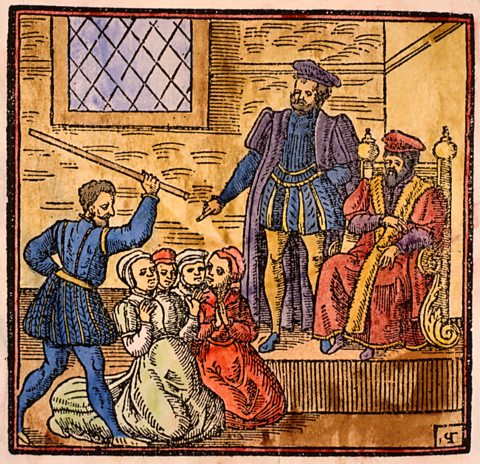 Image source, ALAMY
Image source, ALAMYWhen he heard of the matter, King James ordered that the main suspects be brought to Edinburgh. He even issued a special permission to use torture.
James spoke personally to one of the accused, Agnes Sampson, and was said to be shocked that she could retell private conversations that he'd had with his wife, Anne.
According to Newes from Scotland, it was Agnes Sampson's confession that linked the accused to a plot to kill King James.
Moreover she confessed, that at the time when his Majestie was in Denmarke, shee ā¦ tooke a Cat and christened it, and ā¦ said Cat was conveyed into the middest of the Sea by all these Witches, sayling in their Riddles or Civesā¦: this done, there did arise such a tempest in the Sea, as a greater hath not bene seene: ā¦ the saide christened Cat was the cause that the Kinges Majesties Shippe at his coming forth of Denmarke, had a contrarie winde to the rest of his Shippes
It is thought that around 70 people were tried for witchcraft in connection with this case.
James paid close attention to the trials and intervened when one woman, Barbara Napier, was declared innocent of all charges. He insisted that the verdict be changed and that she be executed.
Geilis Duncan, whose torture and accusations were at the centre of this witch hunt, was sentenced to death.
Immediately before her own execution, she declared that her confession was untrue and that she had only admitted to witchcraft and plotting to kill the king while suffering extreme pain under torture.
It didn't save her, however, and she was executed by being strangled and then burned.
 Image source, ALAMY
Image source, ALAMYDaemonologie ā The King James's book about witchcraft
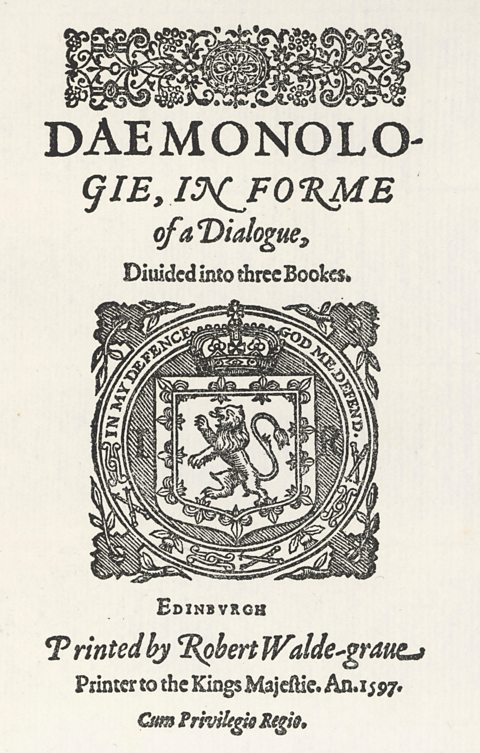 Image source, ALAMY
Image source, ALAMYThe events surrounding the North Berwick trials convinced King James that not only were witches a real threat, but that they could be involved in treason against him.
He started work on a book which detailed the dangers posed by witches.
It was named Daemonologie, and was published in 1597, the only such book published by a king.
The book was influential in convincing others of the dangers of witchcraft.
 Image source, ALAMY
Image source, ALAMYWitches and Shakespeare
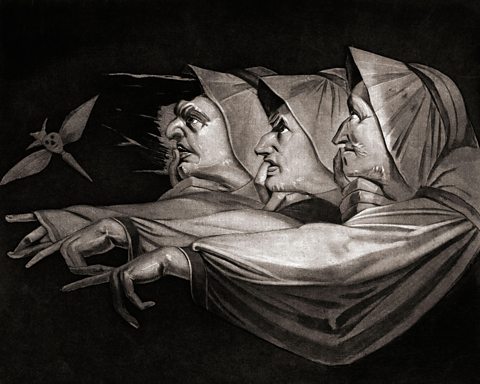 Image source, ALAMY
Image source, ALAMYKing James's Daemonologie influenced William Shakespeare. It is thought that the book provided the inspiration for the witches in his play Macbeth.
In Macbeth one of the witches even refers to traveling across the sea in a sieve, just like the North Berwick witches were accused of doing:
But in a sieve, I'll thither sail(Macbeth, Act 1, Scene 3)
 Image source, ALAMY
Image source, ALAMYJames becomes King of England
When James became King of England in 1603, he continued his fight against witchcraft.
In 1604, the English Parliament passed an Act against Conjuration, Witchcraft and dealing with evil and wicked Spirits. This new law made performing witchcraft, or consulting with evil spirits a crime punishable by death.
Later James came to accept that many of those accused of witchcraft had been accused unfairly.
As a result, he was less active in hunting witches in later life.
However, it would be another 124 years before a new law brought witch trails across Scotland and the UK to an end.
Test your knowledge
More on Scottish witch trials
Find out more by working through a topic
- count6 of 7

- count7 of 7
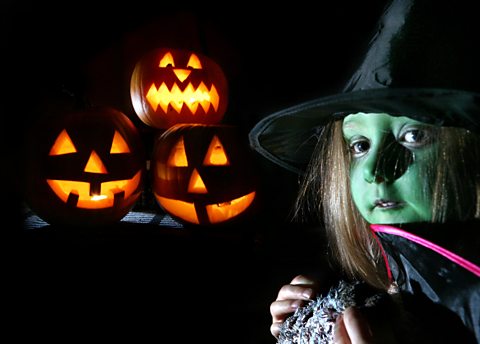
- count1 of 7
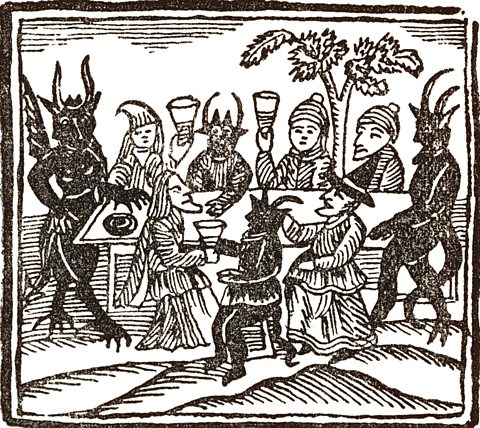
- count2 of 7
